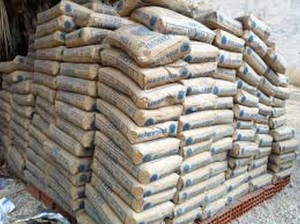“What, you mean like above ground?” wondered a puzzled shopkeeper, when asked whether the cement might be used for rebuilding houses. “People do that?”
 Gaza City, April 6 – Inhabitants of the coastal strip of territory governed by the Islamist Hamas movement can sort of remember that cement has some purpose other than the construction of tunnels with which to attack Israel or smuggle arms, local sources are reporting.
Gaza City, April 6 – Inhabitants of the coastal strip of territory governed by the Islamist Hamas movement can sort of remember that cement has some purpose other than the construction of tunnels with which to attack Israel or smuggle arms, local sources are reporting.
Thousands of buildings in the Gaza Strip were destroyed or otherwise rendered uninhabitable during the war between Israel and Hamas in the summer of 2014, in addition to more than 2,000 people killed. Israel has since allowed cement into Gaza in large quantities for purposes of rebuilding homes, schools, and other buildings, but Hamas has instead diverted the materials to the construction of more underground passages, bunkers, and arms storage facilities, such that few in Gaza associate cement with anything but that effort.
A survey of residents of the battered Suja’iya neighborhood of Gaza City, where much of the fighting on the ground took place, revealed that some of the older Gazans remembered that cement can be used to build houses, schools, hospitals, and other above-ground facilities, such as roads and sidewalks. Only a handful of people overall, however, could recall unprompted that cement has a use other than in tunnels for attacking Israel or smuggling.
“What, you mean like above ground?” wondered a puzzled shopkeeper, when asked whether the cement might be used for rebuilding houses. “People do that?”
“I guess I can see how that might work,” admitted a teacher at a UNRWA school. “Unorthodox, perhaps, but from a physical standpoint, sure. Is that legitimate? It just sounds off somehow.”
Among the residents whose homes were destroyed in the fighting, slightly more awareness of cement’s alternative purposes persists. “It’s not just for building tunnels – everybody around here knows that,” insisted Hussein Jabari, whose Beit Lahiyya home hosted Hamas command post and was therefore flattened by IAF bombing. “It’s also for taking from the UNRWA warehouse at distribution time and then turning around and selling to Hamas for building tunnels.” Jabari and his family have lived in a school since the fighting.
Some Hamas officials also displayed slight awareness of uses for cement beyond military tunnel construction. “We also use the cement as a political and diplomatic tool,” explained Ministry of Housing Director-General Awildayin Rubbl. “By depriving the people of materials with which to rebuild houses, we highlight their misery, and blame that on Israel and its blockade, in hopes of generating international pressure on the Zionists. The cement comes in very handy in that regard.”



